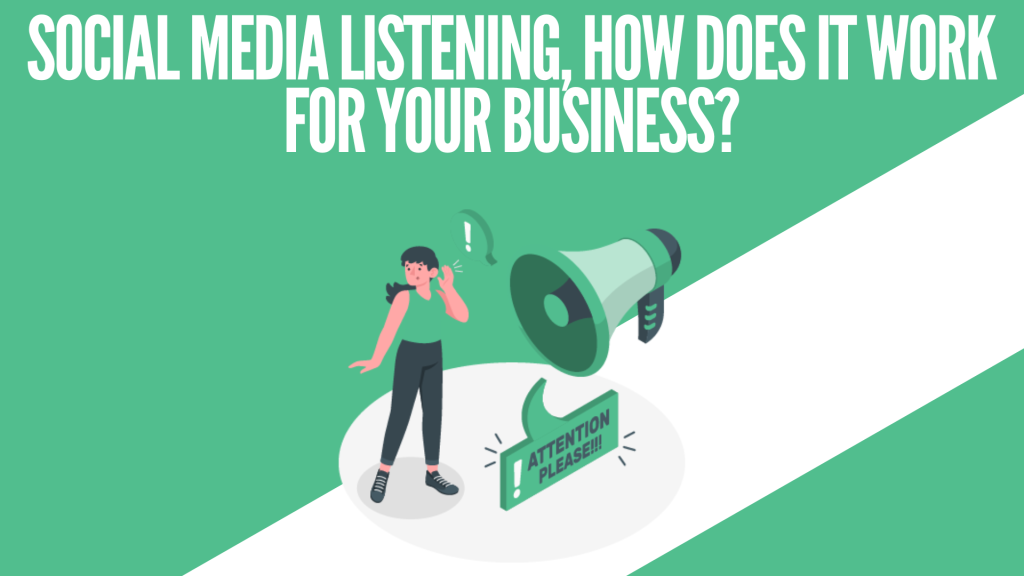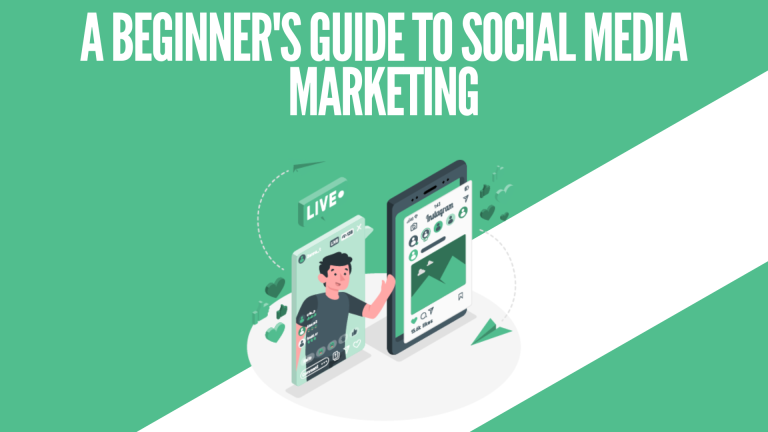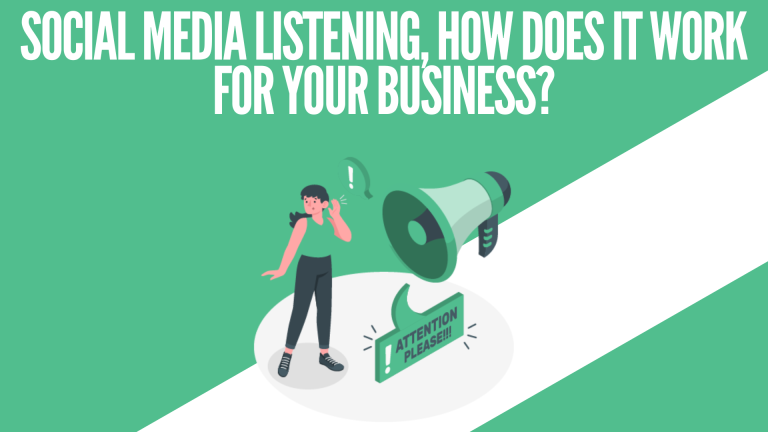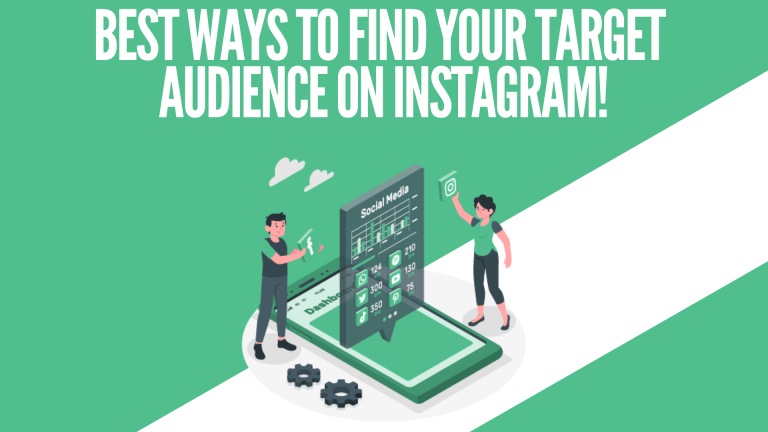
Social media listening, how does it work?
In the ever-evolving landscape of digital marketing, understanding your audience is not just a valuable asset, but a strategic imperative. This is where social media listening steps in, a dynamic approach that enables you to grasp the pulse of your audience by actively analyzing conversations, sentiments, and discussions across various social media platforms. In this comprehensive guide, we'll embark on a journey to uncover the intricate mechanics of social media listening—how it works, why it's vital, and how businesses can leverage it to their advantage.
Understanding the Essence of Social Media Listening
In today's digitally connected world, conversations and opinions are no longer confined to offline interactions. Social media listening, also known as social media monitoring or social media intelligence, involves actively monitoring and analyzing online discussions, mentions, and sentiments about your brand, industry, or relevant topics. It's not merely about counting likes and retweets; it's about diving into the rich tapestry of digital conversations to extract insights that can inform your marketing strategies, improve customer experiences, and drive business growth.
The Fundamental Mechanics of Social Media Listening
Data Collection and Aggregation
At the core of social media listening lies the process of data collection. Specialized tools, equipped with web crawlers, scan and gather mentions, posts, comments, and discussions from diverse sources such as social media platforms, forums, blogs, news articles, and more. These tools aggregate the collected data to provide a comprehensive and holistic view of how your brand is perceived, discussed, and engaged with online. For instance, tools like Brandwatch and Talkwalker employ advanced algorithms to capture mentions of your brand across platforms like Twitter, Instagram, Facebook, YouTube, and even influential blogs.
Sentiment Analysis
Sentiment analysis, often powered by sophisticated natural language processing algorithms, is a pivotal component of social media listening. This process involves assessing the sentiment—positive, negative, or neutral—conveyed in a mention or post. For instance, a customer tweeting, "Loving the new interface of Product Y! It's so intuitive!" would be analyzed as expressing a positive sentiment. This analysis goes beyond the surface to understand how your audience feels about your brand, products, or industry.
Contextual Understanding
Navigating the landscape of social media listening demands a keen sense of context. Simply tracking keywords might lead to misinterpretations. A post like "This software update is exactly what I needed—said no one ever" could be misconstrued if taken out of context. Tools need to discern nuances like sarcasm and irony to provide accurate insights. Contextual understanding ensures that the sentiments and opinions expressed are correctly interpreted, allowing you to respond effectively.
Emerging Trends and Insights
One of the most valuable outcomes of social media listening is the identification of emerging trends and insights. By analyzing the collected data, you can spot patterns, discussions, and topics that are gaining traction in your industry. This proactive approach empowers you to align your strategies with what's resonating with your audience. For example, if a fashion brand notices an increase in discussions around sustainable fashion, they can adjust their content and product offerings to cater to this growing trend.
The Significance of Social Media Listening
Customer Insights and Feedback
The true power of social media listening lies in its ability to provide direct access to customer insights and feedback. By monitoring online conversations, you can understand what your customers like, dislike, and desire. This insight goes beyond numbers—it's about understanding the nuances of their preferences and pain points. For instance, if a cosmetics brand notices that customers frequently discuss the need for vegan-friendly products, this insight can guide their product development and marketing efforts.
Reputation Management
Maintaining a positive online reputation is paramount in the digital age. Social media listening enables brands to swiftly detect and address negative sentiments or conversations. Timely responses to negative reviews, comments, or mentions can prevent potential PR crises and show that you care about your customers' concerns. Imagine a restaurant chain monitoring their social media channels and responding promptly to a negative review about a recent dining experience. Such responsive actions can turn a dissatisfied customer into a loyal advocate.
Competitive Analysis
The digital realm provides a window into your competitors' strategies, strengths, and vulnerabilities. Social media listening allows you to monitor your competitors' conversations, gaining insights into how their audience perceives them. By understanding your competitors' successes and shortcomings, you can fine-tune your own strategies and differentiate yourself in the market. For instance, an electronics brand can track discussions around their competitors' product launches to identify aspects that resonate with consumers and incorporate those insights into their own product development.
Personalized Engagement
Social media listening equips you with the tools to personalize your engagement with customers. By understanding their preferences and pain points, you can tailor your responses and communications. For instance, if you discover through social media listening that customers often face challenges with a specific feature of your software, you can create targeted content or tutorials to address those challenges. This not only enhances the customer experience but also demonstrates your commitment to understanding and solving their problems.
Crafting an Effective Social Media Listening Strategy
Define Your Objectives
Before embarking on your social media listening journey, define your objectives clearly. Are you aiming to understand customer sentiment, track brand mentions, identify industry trends, or monitor competitor conversations? Defining your goals provides direction and ensures that your efforts are aligned with your strategic priorities.
Choose the Right Tools
Selecting the right social media listening tools is pivotal to the success of your strategy. Consider features like sentiment analysis accuracy, data visualization capabilities, real-time tracking, and compatibility with your chosen platforms. Tools like Brandwatch, Hootsuite Insights, and Meltwater offer a range of capabilities tailored for effective social media listening.
Monitor Relevant Platforms
Not all social media platforms are equal in terms of relevance to your audience and industry. Identify the platforms where your target audience engages the most and where discussions related to your brand or industry are prominent. While platforms like Facebook, Twitter, Instagram, and LinkedIn are commonly monitored, also consider industry-specific forums, blogs, and platforms that cater to your niche.
Analyze and Act
Collecting data is only half the battle—analysis and action are equally vital. Dedicate time to analyzing the insights derived from your social media listening efforts. Identify patterns, sentiments, emerging trends, and discussions that can guide your content creation, product development, and marketing strategies. Use these insights to refine your approach, enhance customer engagement, and foster deeper connections with your audience.
The Future of Social Media Listening
AI and Automation
As technology evolves, social media listening tools are becoming more sophisticated with the integration of artificial intelligence and automation. AI-driven sentiment analysis is becoming more accurate, enabling tools to understand the complexities of language and context better. Automation streamlines the process of data collection and analysis, allowing marketers to spend more time deriving insights and making strategic decisions.
Integration with CRM
The integration of social media listening with Customer Relationship Management (CRM) systems is on the horizon. By merging data from social media listening tools with customer data from CRM systems, businesses can gain a comprehensive view of their customers' interactions and sentiments. This holistic approach enhances customer understanding, engagement, and relationship-building.
Ethical Considerations
With data privacy and ethical considerations in the forefront, transparent social media listening practices are crucial. Brands need to communicate clearly to their audience how data is collected, used, and managed. Providing users with options to manage their data and control their online footprint fosters trust and complies with evolving data protection regulations.
Conclusion
In the age of information abundance, social media listening emerges as a beacon guiding businesses toward meaningful interactions, insights, and growth. By embracing the mechanics of social media listening, you harness the power to decipher the complexities of your audience's desires, opinions, and preferences. Beyond the numbers, social media listening delves into the qualitative realm of sentiment and context, enabling you to craft strategies that resonate authentically. As the digital landscape continues to evolve, social media listening remains an indispensable tool—a compass that guides your brand toward navigating the intricate world of online conversations and understanding the pulse of your audience.
FAQs
Q1: How can businesses benefit from social media listening in terms of revenue?
A1: Social media listening offers insights into customer preferences, pain points, and emerging trends. By aligning products, services, and marketing strategies with these insights, businesses can create offerings that cater to customer needs, potentially leading to increased revenue.
Q2: Is sentiment analysis always accurate in social media listening?
A2: While sentiment analysis has improved significantly with AI advancements, nuances in language, sarcasm, and context can still pose challenges. Human oversight and interpretation are often necessary to ensure accurate results.
Q3: Can small businesses with limited resources benefit from social media listening?
A3: Absolutely. Many social media listening tools offer scalable solutions that cater to businesses of all sizes. The insights gained can help small businesses make informed decisions and compete effectively in the digital landscape.
Q4: How frequently should a business analyze social media listening data?
A4: The frequency of analysis depends on your objectives and the pace of your industry. Regular monitoring, such as weekly or monthly, ensures that you stay updated on trends, sentiment shifts, and emerging discussions.
Q5: Is social media listening only relevant for B2C businesses?
A5: No, social media listening is valuable for both B2C and B2B businesses. B2B businesses can gain insights into industry trends, competitor strategies, and customer sentiments that inform their marketing and engagement strategies.
More Social Media Marketing Blogs





